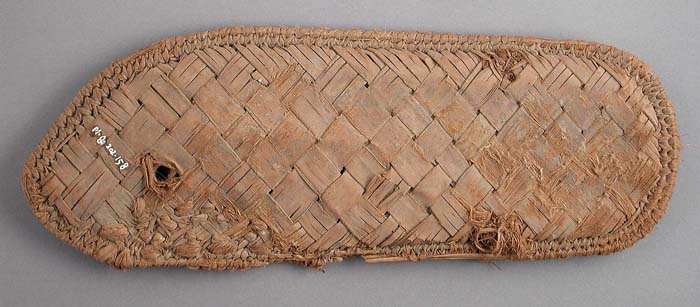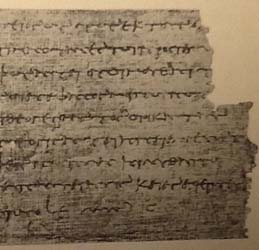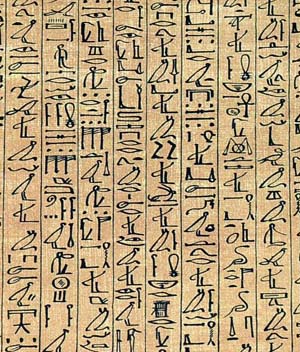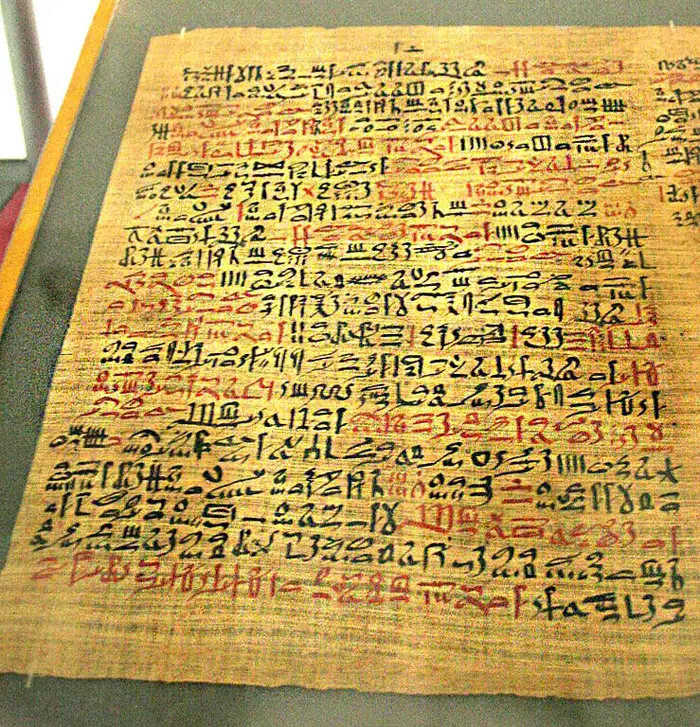What is Papyrus?
Papyrus is both the shortened name of the plant and the paper product made from it, but is most often referred to as the latter.
The plant grows in the Nile River and can reach heights of about 16 feet. The long stalks of the plant were typically soaked in water until they reached a slight state of rot. They were then laid next to and on top of each other, and pounded flat until the stalks essentially merged. The final step was drying.
Egyptians used papyrus for much more than just making paper however. Papyrus was also used in woven material such as baskets, mats, rope and sandals. The stalks could be bundled together to make boats and when dried, it could be used for fuel. For a long time, the art of turning papyrus into paper was lost. Although the Egyptians did not leave much evidence on how it was done, in 1965, Dr. Hassan Ragab rediscovered the process through intense research.

© Ashley van Haeften – Papyrus Sandal
The Papyrus PlantPapyrus Plant
Cyperus papyrus is a flowering plant that grows in water. Native to Africa, it belongs to the sedge family of Cyperaceae and grows tall, thick stands of vegetation in water. The plant does not have leaves, but instead grows from a clumpy, triangular mass of stems. At the top of each stem sits a feathery mass of thread-like stems that give it the appearance of a feather duster.
Flowers form eventually at the end of the array, forming brownish-green clusters. These then give way to brown fruits resembling nuts. The papyrus plant enjoys full sun and has a sensitivity to frost, like most tropical plants.
History of Papyrus in Ancient Egypt
The first instance of documented papyrus came in Egypt’s first dynasty. However, many researchers believe that papyrus was used as a writing material as early as 4,000 BC. It continued in some manner of use until about the 11th century. Its primary rivals as a writing material included scrolls made from animal skins and the Chinese method of making paper from rags.
Parchment and paper went into widespread use by the 12th century in Europe and elsewhere, however, papyrus remained an option in some places. Egypt continued using it until the inexpensive paper became more common.

Ancient Egyptian Papyri
A variety of documents written on papyrus remain preserved to this day. The various documents contain a range of subjects, from biographies, to maps, religious texts and scientific or medical documents. A short list of papyri from ancient Egypt with subject matter is as follows:

Papyrus of Ani, Book of the Dead
The Ebers Papyrus
The Ebers Papyrus is particularly famous among ancient Egyptian papyri. It contains extensive herbal and medical knowledge and dates back to 1550 BC. It currently resides in the University of Leipzig library in Germany.
Georg Ebers bought the document in 1873–74 at Luxor. The scroll is about 110 pages long and is considered one of the oldest medical documents in the world. It has about 700 formulas and remedies of both a magical and herbal nature. It illustrates the Egyptians’ knowledge of the heart as the center of the body’s blood supply, but at the same time contains incantations for getting rid of demons. It covers such medical subjects as contraception, asthma, bone-setting, dentistry and burns.

© Einsame










































